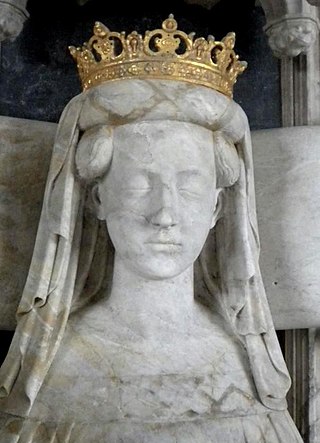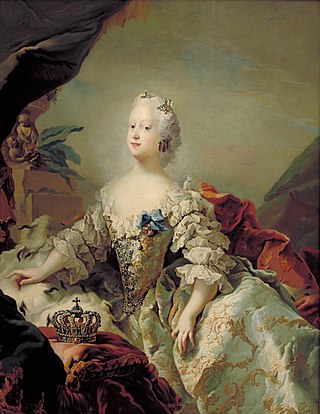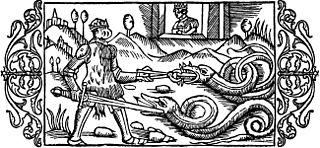
Awilda, also known as Alwilda, was a female pirate. The story of Awilda is doubted by some historical scholars and considered to be a legend.

Awilda, also known as Alwilda, was a female pirate. The story of Awilda is doubted by some historical scholars and considered to be a legend.
Awilda was the daughter of a 5th-century Scandinavian king; [1] [2] referred to in one source as Synardus and a "Gothic king". [3] It is said[ by whom? ] that the King, her father, had arranged a marriage for her to Alf, the crown prince of Denmark, [2] whose father was King Sygarus of Denmark. [3] However, Awilda refused her father's choice. [2] [3] She and some of her female friends dressed like sailors and commandeered a ship. [2] [3] While sailing, they came across a pirate ship that had recently lost its captain, and the pirates elected Awilda as their captain. [2] [3] The King of Denmark sent his son and a navy ship to battle with the "irksome" pirates. [2] [3] Prince Alf and his men were able to board their ship and gain the upper hand in the battle. [2] [3] Apparently, Awilda was so impressed with the prince's courage that she revealed her true identity, and agreed to marry Alf. [2] [3] They married on board, and lived happily ever after as King and Queen of Denmark. [3]

Italian poet Torquato Tasso writes his most famous tragedy on her story, called Re Torrismondo, where Alwida is promised in marriage to the king of Sweden, Germondo, but falls in love with Torrismondo, so she decides to commit suicide in order not to choose between love and honor.
Passage from William Falconer's Dictionary of the Marine - under entry for Pirate:
"Amongst the most celebrated pirates of the north is recorded Alvilda , daughter of a king of the Goths, named Sypardus. She embraced this occupation to deliver herself from the violence imposed on her inclination, by a marriage with Alf, fon of Sigarus, king of Denmark. She drest herself as a man, and composed her band of rowers, and the rest of her crew, of a number of young women, attired in the same manner. Amongst the first of her cruizes she touched at a place where a company of pirates bewailed the death of their captain. The strangers were captivated with the agreeable manners of Alvilda, and chose her for their chief. By this reinforcement she became so formidable upon the sea, that prince Alf came to engage her. She sustained his attacks for a considerable time; but, in a vigorous action, Alf boarded her vessel, and having killed the greatest part of her crew, feized the captain, namely herself; whom nevertheless he knew nor, because the princess had a casque which covered her visage. Being master of her person, he removed the casque, and in fpite of her disguise, instantly recognized her, and offered her his hand in wedlock. See Hist. Denmark, by Saxo Grammaticus. [4]

Maria Eleonora of Brandenburg was Queen of Sweden from 1620 to 1632 as the wife of King Gustav II Adolph. She was born a German princess as the daughter of John Sigismund, Elector of Brandenburg, and Anna, Duchess of Prussia, daughter of Albert Frederick, Duke of Prussia.

Margaret I was Queen regnant of Denmark, Norway, and Sweden from the late 1380s until her death, and the founder of the Kalmar Union that joined the Scandinavian kingdoms together for over a century. She had been queen consort of Norway from 1363 to 1380 and of Sweden from 1363 to 1364 by marriage to Haakon VI. Margaret was known as a wise, energetic and capable leader, who governed with "farsighted tact and caution," earning the nickname "Semiramis of the North". Also famous derisively as "King Breechless", one of several derogatory nicknames once thought to have been invented by her rival King Albert of Sweden, she was also known by her subjects as "Lady King", which became widely used in recognition of her capabilities. Knut Gjerset calls her "the first great ruling queen in European history."

According to the Gesta Danorum, Alfhild, daughter of the Geatish king Siward, was a shieldmaiden who had her own fleet of longships with crews of young female pirates and raided along the coasts of the Baltic Sea.

Whydah Gally was a fully rigged ship that was originally built as a passenger, cargo, and slave ship. On the return leg of her maiden voyage of the triangle trade, Whydah Gally was captured by the pirate Captain Samuel "Black Sam" Bellamy, beginning a new role in the Golden Age of Piracy.

Mary Read, fictionally known as Mark Read, was an English pirate about whom there is very little factual documentation. She and Anne Bonny were two famous female pirates from the 18th century, and among the few women known to have been convicted of piracy at the height of the "Golden Age of Piracy".
Captain Hector Barbossa is a fictional character of the Pirates of the Caribbean franchise, appearing in all five films in the series. Starting out as a villainous undead skeleton in The Curse of the Black Pearl (2003), Barbossa dies at the end of the film. However, the character is revealed to have been resurrected and brought back from the dead by Tia Dalma by the end of Dead Man's Chest, and has since appeared in anti-heroic roles. Captain Hector Barbossa was one of the nine Pirate Lords in At World's End (2007), a privateer in service to King George II and the British Navy while also seeking revenge against Blackbeard in On Stranger Tides (2011), as well as a rich rogue and influential leader of a prosperous pirate empire and fleet in Dead Men Tell No Tales (2017). Throughout the series, Barbossa has been conceptualized as a "dark trickster" and the evil counterpart of Captain Jack Sparrow.

The Flying Dutchman is a legendary ghost ship, allegedly never able to make port, but doomed to sail the sea forever. The myths and ghost stories are likely to have originated from the 17th-century Golden Age of the Dutch East India Company (VOC) and of Dutch maritime power. The oldest known extant version of the legend dates from the late 18th century. According to the legend, if hailed by another ship, the crew of the Flying Dutchman might try to send messages to land, or to people long dead. Reported sightings in the 19th and 20th centuries claimed that the ship glowed with a ghostly light. In ocean lore, the sight of this phantom ship functions as a portent of doom. It was commonly believed that the Flying Dutchman was a seventeenth-century cargo vessel known as a fluyt.

Elizabeth Turner is a fictional character in the Pirates of the Caribbean film series. She appears in The Curse of the Black Pearl (2003) and three of its sequels, Dead Man's Chest (2006), At World's End (2007) and Dead Men Tell No Tales (2017). She is portrayed by Keira Knightley. She is known to use the alias "Elizabeth Turner", but this later becomes her married name when she weds Will Turner in At World's End, though she was credited as "Elizabeth Swann" in Dead Men Tell No Tales.

MS Jutlandia was contracted by and built for the East Asiatic Company (EAC) in 1934, as a combined passenger and cargo ship at EAC's Nakskov Shipyard, Denmark. Following an extended operational life in which she also served as a hospital ship and a royal yacht, she was finally decommissioned in 1965.

Louise of Great Britain was Queen of Denmark and Norway from 1746 until her death, as the first wife of King Frederick V. She was the youngest surviving daughter of King George II of Great Britain and Caroline of Ansbach.

Daughter of the Lioness series by Tamora Pierce is a series of two novels set in the fictional Tortall universe. It is centered on Alianne of Pirate's Swoop, the sixteen-year-old daughter of Tortall's legendary lady knight, Alanna the Lioness, who was the subject of The Song of the Lioness quartet. The novels take place approximately 24 years after the last book in the quartet, Lioness Rampant.

Kirsten Munk was a Danish noble, the second spouse of King Christian IV of Denmark, and mother to twelve of his children.

Juliana Maria of Brunswick-Wolfenbüttel-Bevern was Queen of Denmark and Norway from 1752 to 1766 as the second consort of King Frederick V of Denmark and Norway. She was mother to the prince-regent, Hereditary Prince Frederick of Denmark and Norway, and was herself de facto regent from 1772 to 1784. King Christian VIII of Denmark and every subsequent Danish monarch excluding Christian IX descends from her.

Arcadia of My Youth: Endless Orbit SSX is an animated television series created by Leiji Matsumoto. It is the sequel to the 1982 animated film Arcadia of My Youth, but like many of the stories set in the Leijiverse, the continuity of the series does not necessarily agree with other Harlock series or films.

Princess Marie of Orléans was a French princess by birth and a Danish princess by marriage to Prince Valdemar. She was politically active by the standards of her day.

In the twelfth-century Danish history Gesta Danorum, Siward,, was an ancient king in Götaland, who had a daughter named Alfhild, who became a legendary Viking pirate.

Princess Caroline of Denmark, was the eldest surviving daughter of King Frederick VI of Denmark. She was unofficially known as "Kronprinsesse Caroline" prior to her marriage, and later as "Arveprinsesse Caroline". She married her father's first cousin, Hereditary Prince Ferdinand, who was heir presumptive to the throne from 1848 to 1863.
Port au Prince was built in France in 1790. The British Royal Navy captured her in 1793 off Port-au-Prince, Haiti. Her original name was General Dumourier; her new owners named her for her place of capture. She became a letter of marque, slave ship in the triangular trade in enslaved people, and privateer cum whaler. In 1806 she anchored at a Tongan island where the local inhabitants massacred most of her crew and then scuttled her.

Alf was a three-masted Norwegian barque which became stranded and then wrecked on 23 November 1909 on Haisbro Sands, off the coast of Norfolk. She was originally built in 1876 as Inchgreen for Scottish owners. In the 1890s she was sold to Danish owners and renamed Adolph Harboe. Around the turn of the 20th century she was sold to Norwegian owners and renamed Alf, serving until she was wrecked off the coast of Norfolk.